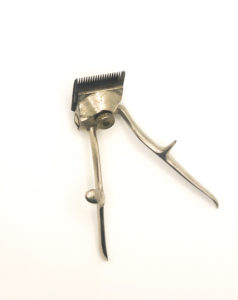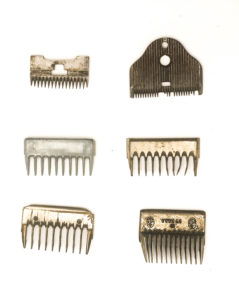The hair clipper is an accessory that has long since entered the daily routine of many men. Comfortable and versatile, it allows you to effortlessly adjust the length of your hair, especially when you don’t have the immediate opportunity to visit your trusted barber. Today the models on the market are the most diverse and increasingly rich in functions: with rechargeable batteries, water resistant, with a silent engine and so on and so forth.
Not everyone knows, however, how the history of this tool goes back a long way, from before the arrival of electricity. Have you ever heard of the manual hair clipper? Here’s how it works one of the tools that, for decades, has been part of the equipment of many barbers around the world and, of course, also of Antica Barbieria Colla.
Manual hair clipper: what is it

To put it simply, the manual hair clipper can be defined as the forerunner of the current electric version. A simple tool, but capable of guaranteeing great results.
The tool saw a special head, similar in size to that of modern hair clippers, connected to two handles. Separated from each other by a spring, or by a snap mechanism, the handles made it possible to operate the heads: by tightening them, the blades moved in the opposite direction, thus allowing to cut the hair.
The use of this tool was certainly indicated for those who wanted short and sculpted cuts and, compared to scissors, required the master barber to have a certain skill in both movements and resistance: the very first models were in fact not very easy to use, so much so that they required good strength in the hands.
Manual hair clipper: pros and cons

But what advantages did the use of this tool represent? And, above all, what were the most obvious disadvantages?
As already mentioned, the manual hair clipper was a very versatile solution for making short cuts, thus making sure that the hair was all the same length. Furthermore, they allowed the barber to reduce cutting times compared to common scissors.
However, if lightly oiled or operated by inexperienced hands, these tools risked being unpleasant for the customer. In fact, it could happen that the hair was pulled out rather than cut or, again, that it got entangled in the mechanism of the heads.
Antica Barbieria Colla still preserves some historical examples of the manual hair clipper, some of which are reproduced in the images of this article.

